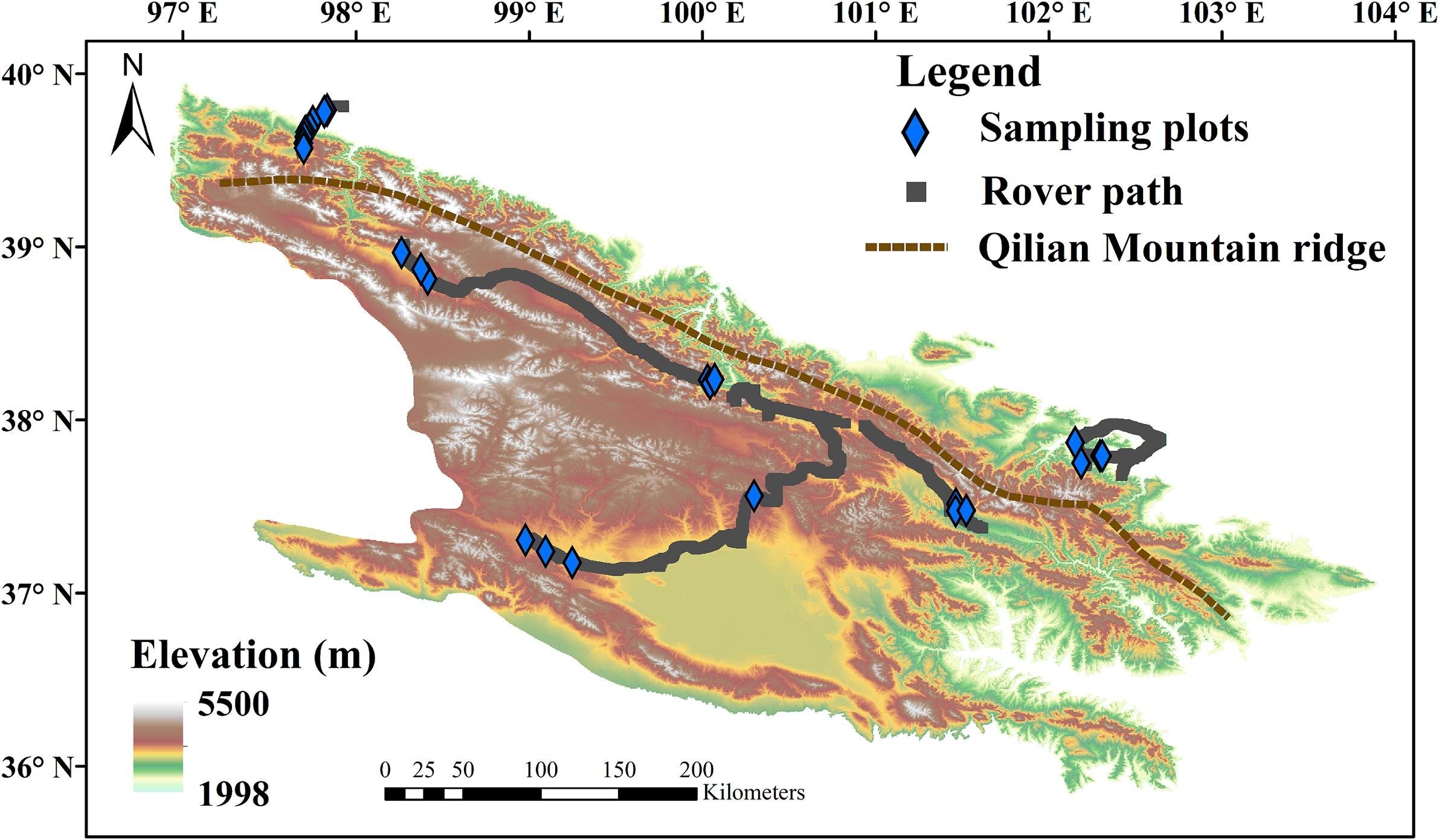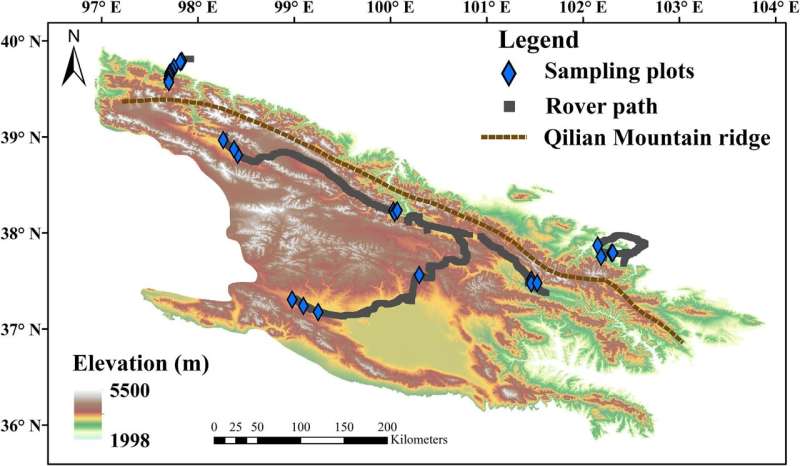

Soil water resources are crucial for hydrological processes and ecosystem functions on the Qinghai-Tibetan Plateau. However, accurately measuring soil moisture distribution in this region is challenging due to diverse ecosystems, complex terrain, and harsh environmental conditions.
A research team led by Prof. Zhang Yongyong from the Northwest Institute of Eco-Environment and Resources of the Chinese Academy of Sciences recently estimated mesoscale soil moisture on the eastern Tibetan Plateau using a cosmic-ray neutron rover. The research is published in the journal Geoderma.
Mobile cosmic-ray neutron technology is an innovative method for observing mesoscale soil moisture. It helps measure area-averaged soil moisture over hundreds of meters.
“Aboveground biomass is essential for calibrating the rover’s measurements,” said Prof. Zhang. To address the effects of vegetation on neutron counts, Zhang and his team used the Normalized Difference Vegetation Index (NDVI) as a correction variable to improve the accuracy of soil moisture measurements for the mobile cosmic-ray neutron rover.
After accounting for vegetation effects, the root mean square error (RMSE) for soil moisture determined by the rover was within ±0.025 g/g, with a calibration parameter N0_NDVI set at 443 counts per minute (cpm) in the eastern Qinghai-Tibetan Plateau.
The rover’s average footprint radius sites ranged from 165 to 224 meters at all calibrations, with a mean penetration depth of 19 to 49 centimeters. The average mesoscale soil moisture varied along the rover’s route by ecosystem type.
These findings provide valuable mesoscale soil moisture data and new insights into soil water information at the transect scale across diverse ecosystems in the Qinghai-Tibetan Plateau.
More information:
Yongyong Zhang et al, Mesoscale soil moisture measurements along the rover route using the mobile cosmic-ray neutron sensing in the eastern Tibetan Plateau, Geoderma (2024). DOI: 10.1016/j.geoderma.2024.117046
Provided by
Chinese Academy of Sciences
Citation:
Cosmic-ray neutron rover assists in estimating mesoscale soil moisture on eastern Qinghai-Tibetan plateau (2024, October 10)
retrieved 10 October 2024
from https://phys.org/news/2024-10-cosmic-ray-neutron-rover-mesoscale.html
This document is subject to copyright. Apart from any fair dealing for the purpose of private study or research, no
part may be reproduced without the written permission. The content is provided for information purposes only.